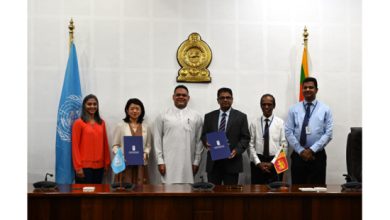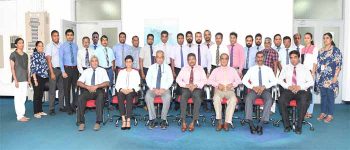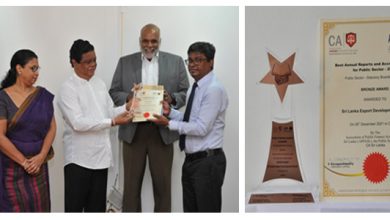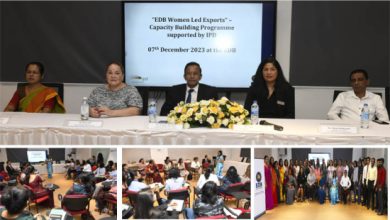A BIG Step to Enhance Plastic Management Aspiring for Circular Economy
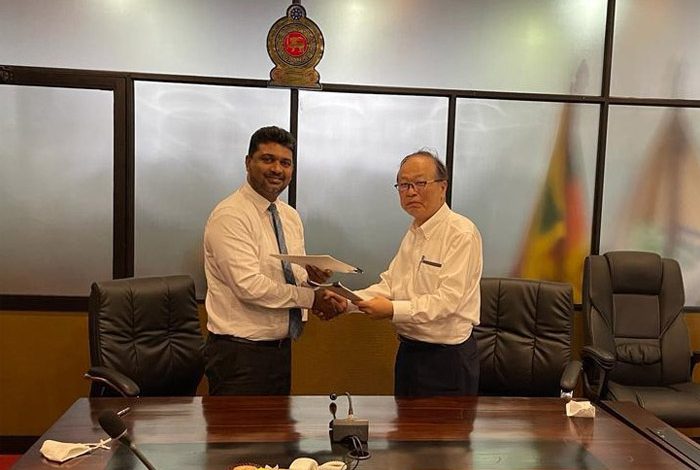
JICA Headquarter Mission headed by Dr. Yoshida Mitsuo, Senior Advisor of the Global Environment Department of JICA, successfully completed three weeks survey to start a new Technical Cooperation Project, “The Project for Strengthening Plastic Management Capacity (the Project)”. The mission had extensive discussion on future collaboration with over 20 organizations working on plastic issues of Sri Lanka and agreed on the basic structure and activities of the Project with Central Environmental Authority (CEA).
As plastic management is one of the global burning issues, Sri Lanka developed the National Plastic Waste Management Action Plan (2021–2030) with assistance from UNEP (United Nations Environment Programme), IGES-CCET (IGES Centre Collaborating with UNEP on Environmental Technologies), and the Ministry of the Environment, Japan (MOEJ). To support implementation of the Action Plan, a project namely “Marine litter and microplastics: promoting the environmentally sound management of plastic waste and achieving the prevention and minimization of the generation of plastic waste’ (BRS-Norad-1), financed by the Norwegian Agency for Development Cooperation (Norad) has been attempting to make inventory data available for plastic import and export to the country and estimate national plastic waste generation. Also, a center for plastic management was established under the purview of CEA to properly handle multi-stakeholder tasks upon the recommendation of the Government Audit Department in 2022. The Project will closely cooperate with the center, utilize the above-mentioned assets developed by development partners and seek further collaboration with UNEP, IGES-CCET, etc.
Ms. Sarojinie Jayasekara, Director – Solid Waste Management, CEA explained the expectations to JICA that ”Plastic Management is a multi-stakeholder task and CEA expects to develop database and strengthen the capacity of priority areas i.e., Single Use Plastic, Packaging management with some applications through pilot projects under this JICA Technical Assistance. Also, the CEA would like to thank JICA for this timely intervention which would be very important in the implementation of the activities identified in the National Plastic Waste Management Action Plan.”
Dr. Yoshida, the Mission Leader, highlights the importance of the Project that “Over the 20 years since 2002, JICA has implemented five cooperation projects with Sri Lankan authorities in the solid waste sector. It can be said that these projects were mainly aimed at securing public health and protecting the environment, such as improving implementation capacity and developing technology for solid waste management. However, although present Project focuses on plastic waste and materials, it goes one step beyond previous approaches for improving waste treatments and management. It aims to develop sustainable resource management by focusing on understanding the actual material flows.”.
The Project is scheduled to commence in July 2023. JICA will work on plastic issues aspiring for a sound material cycle society and circular economy in Sri Lanka in collaboration with various partners further.
BRS-Norad-1 project, implemented by the Secretariat of the Basel, Rotterdam and Stockholm Conventions in collaboration with the Ministry of Environment of Sri Lanka and IGES-CCET: http://www.basel.int/Implementation/Plasticwaste/Technicalassistance/Projects/BRSNorad1/tabid/8343/Default.aspx
The National Plastic Waste Management Action Plan (2021–2030): http://www.env.gov.lk/web/images/pdf/policies/National_Action_Plan_on_Waste_Management.pdf


